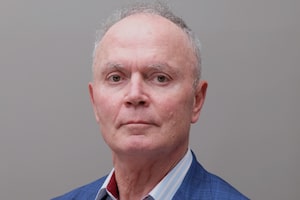Investing in core exchange-traded funds (ETFs) with a fixed asset mix is about the most passive investment style you can choose. It doesn’t involve stock-picking or special asset classes like real estate, private equity or infrastructure.
To make it even more plain vanilla, let’s eliminate the ability to shift money between asset classes to avoid a crisis or to take advantage of an opportunity in the market. One wouldn’t expect the returns from such a simple approach to compete favourably with the country’s largest pension funds that can afford to pay literally hundreds of millions of dollars a year for active investment management.
To test this, assume we invest $100 in an ETF portfolio starting Jan. 1, 2014, and hold it to Dec. 31, 2022. (The nine-year period was chosen because that is how long all of these ETFs have been in existence.) This portfolio consists of 25 per cent in the iShares S&P/TSX Capped Composite Index ETF, 25 per cent in the iShares S&P 500 Index ETF, 20 per cent in the iShares MSCI International Index ETF and 30 per cent in the iShares Core Canadian Universe Bond Fund ETF. This fund is rebalanced regularly to maintain a constant asset mix.
Now imagine investing the same $100 in the Ontario Teachers’ Pension Plan (OTPP) fund. The OTPP fund has about $250-billion in assets (only the CPP fund is bigger) with a team of 350 investment professionals managing its assets in more than 50 countries. Besides stocks and bonds, the fund also invests in alternate asset classes like real estate, private equity, commodities and infrastructure to enhance returns or at least diversify away from risk.
The result of this comparison is an eye-opener. As the chart shows, the ETF portfolio kept up with the OTPP-invested fund until the end of 2021. And while the OTPP apparently outperformed ETFs by a wide margin in 2022, this needs to be taken with a grain of salt. About half of the OTPP assets are privately invested and hence are not “marked-to-market.” This means that their book value at any given time may not accurately reflect fair market value.
In bad investment years like 2022, such assets will appear to outperform simply because prices have not been marked down to reflect what the investments would actually fetch in the marketplace. The same phenomenon occurred in 2018 and the ETF portfolio caught up to the OTPP a year later. (It will be interesting to see what happens when full-year 2023 results are available.)
This exercise is not meant to pick on the OTPP, which I suspect performed no worse than other jumbo funds since 2014. The OTPP fund was chosen simply for its size and the fact that calendar-year data was readily available. Nor is it meant to highlight RBC iShares ETFs to the exclusion of other products; competing ETF products on the market would almost certainly have achieved similar returns.
The takeaway is that investors can do well without having to incur high investment fees and without having access to sophisticated management techniques. It may suffice to choose a suitable asset mix using ETFs (for this they may need some advice at the outset) and then to maintain that mix in good markets and bad.
Frederick Vettese is former Chief Actuary of Morneau Shepell and creator of the PERC retirement calculator (perc-pro.ca).
 Frederick Vettese
Frederick Vettese